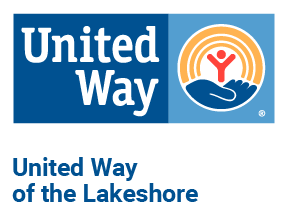For National Domestic Violence Awareness Month, our goal is to raise awareness about domestic, spousal, and teen dating violence.
Women are the primary victims of domestic violence, but both men and women can be victims. Nationwide, 1 in 3 women and 1 in 4 men have suffered physical abuse in a relationship. The hope is that through the awareness of wearing purple, a color that has long been used by women seeking justice, conversations can be started about domestic violence, with the goal of lessening it and building healthy relationships.
Local agencies that address the issue of domestic violence include Every Woman’s Place and C.O.V.E, which provide a Safe Shelter program for those who need to get out of a dangerous situation; Mercy Health’s Behavioral Services, with treatment programs for domestic violence offenders, so they can break the pattern of abuse; and Legal Aid’s Domestic Violence Intervention program, giving victims the advice they need when seeking justice and solutions.
The stories they share tell us how important these programs are to those in our community who need them (names have been changed.)
Finding A Safe Home
Every Woman’s Place Safe Shelter Program provided emergency safe shelter to a mother "Angela", and her adult daughter, "Arianna", both victims of domestic violence. Angela reported that she experienced extreme physical violence throughout her 25-year relationship with her husband. Even after she divorced him, he continued to threaten and harm her on a regular basis, including setting fire to her home. Following the fire, Angela moved in with her daughter, however, her assailant found her and assaulted her in front of her daughter’s home. Angela contacted the crisis line at Every Woman’s Place to seek safe shelter and was provided safe shelter immediately. She worked with law enforcement and prosecutors, and her assailant was charged and convicted of the crimes he committed against her.
Angela’s adult daughter, Arianna, was also in a domestic violence relationship. She had been with her assailant, who was the father of her two young children, for 2 years. Arianna was also seeking safe shelter and was provided emergency shelter. Angela, Arianna and Arianna’s two young children remained in a safe shelter for approximately 2 months. During that time, they were referred to local agencies to assist with housing. Arianna was also referred to another local agency to assist with postpartum depression. While residing in the shelter Angela and Arianna decided they wanted to find housing together so that Angela could assist Arianna with her children, and so that they could provide emotional support to each other. They were both able to stay in the shelter until they secured safe, affordable housing.
Recognizing Responsibility
When he started treatment with Mercy Health Behavioral Health Services, John had been involved in two romantic relationships that ended due to domestic violence. He began treatment blaming his victims for making him react the way he did, with physical violence in the first relationship and verbal violence in the second. John entered treatment thinking that verbal violence was not really an issue since he had not physically assaulted his partner.
As John continued in treatment, he was able to identify how he had just changed his tactics of domination and control to using words instead of his hands. John learned through his treatment that he was responsible for his reactions and actions in spite of how the other party chose to behave. He was able to identify the negative impact and harm that he caused by his behavior choices, and what his responsibility is in developing healthy relationships and positive communication styles in a relationship.
Providing Counsel to Victims
Legal Aid provides assistance to domestic violence victims for civil court issues, such as divorce and custody/visitation. In a recent case, they were able to help a domestic violence victim who had moved to Michigan to escape an abusive relationship. It was a challenging case because the opposing party was out of state. Legal Aid was able to review the case documents and pleadings and provide advice for an upcoming phone hearing, helping her prepare a response, pleading and navigate the filing process, and getting the court to set up a video call. The client was very overwhelmed and distraught by the situation, which involved her partner taking their child after not being involved in the child’s life for three years. The case ended with the out of state court ordering the child returned and granting a divorce.
Through community support and agency collaboration, Domestic Violence victims have a voice and support, can find safe shelter and new lives. Domestic Violence perpetrators can realize how their behavior affects others and learn about developing healthy relationships by changing their patterns.
To learn more about these programs and others that receive funding from United Way of the Lakeshore to help inspire change and build thriving communities, visit https://www.unitedwaylakeshore.org/partners



